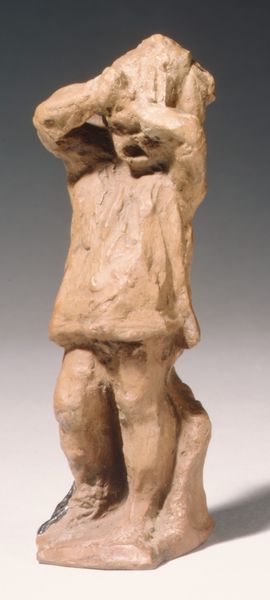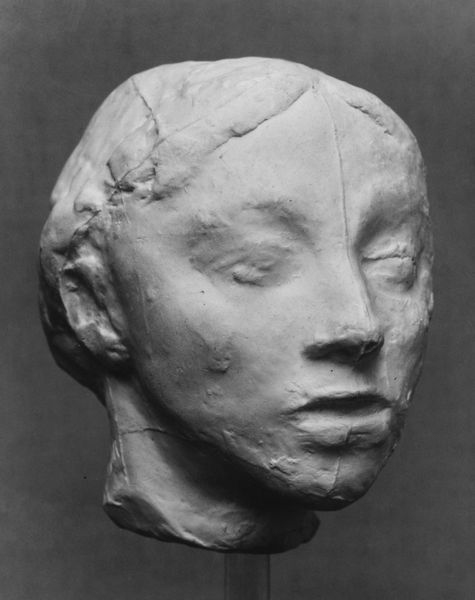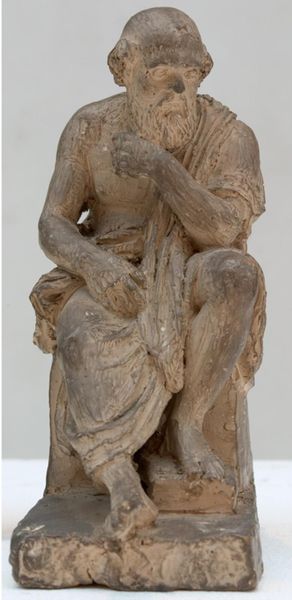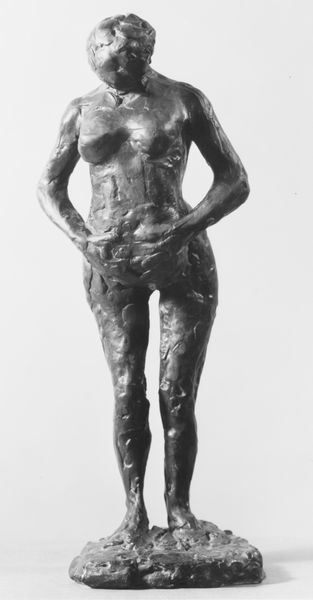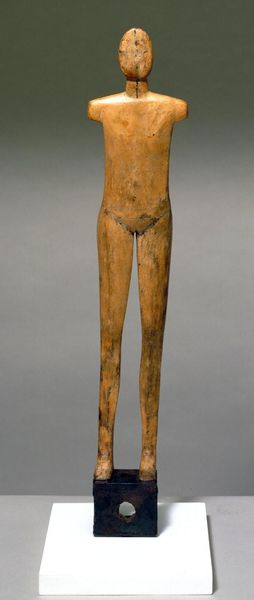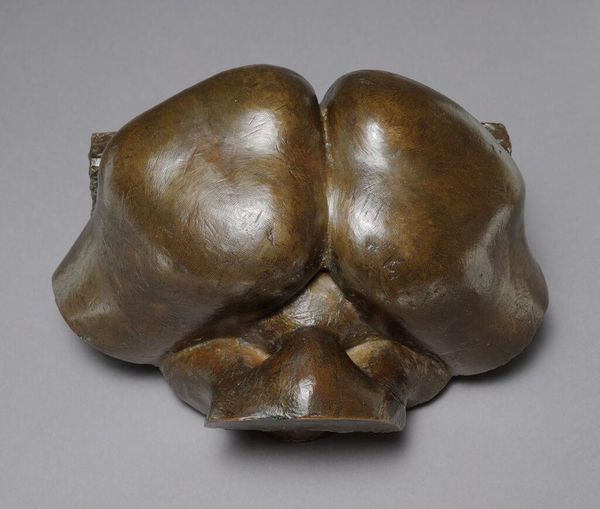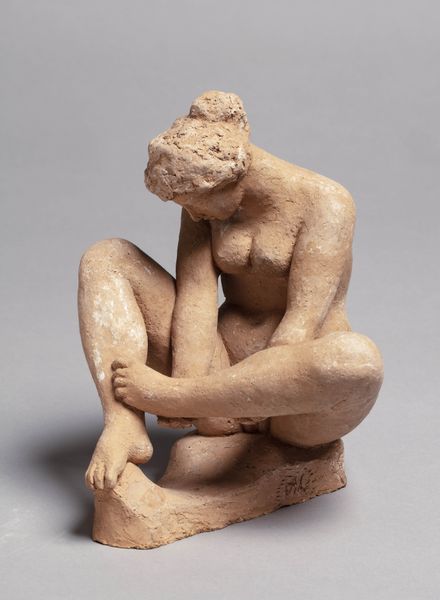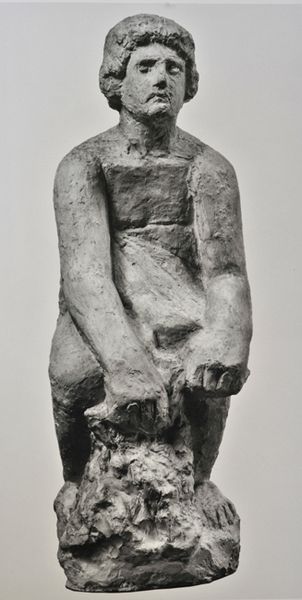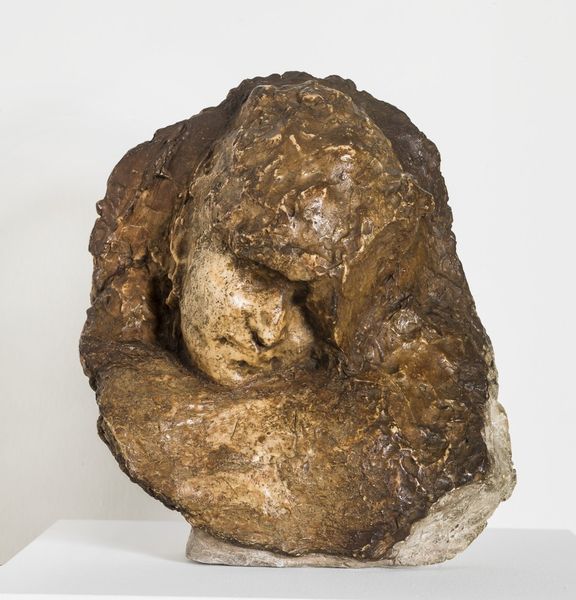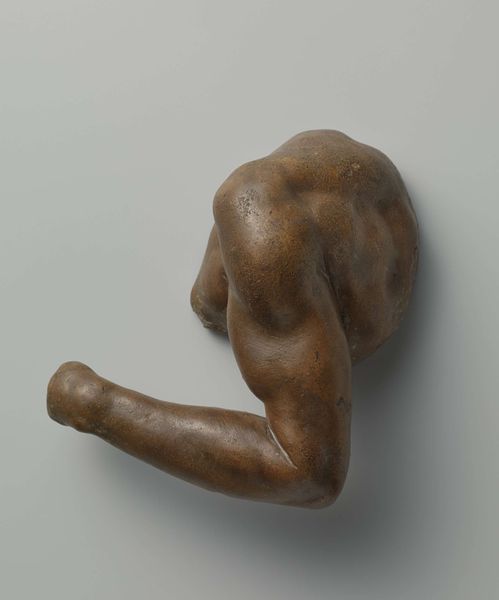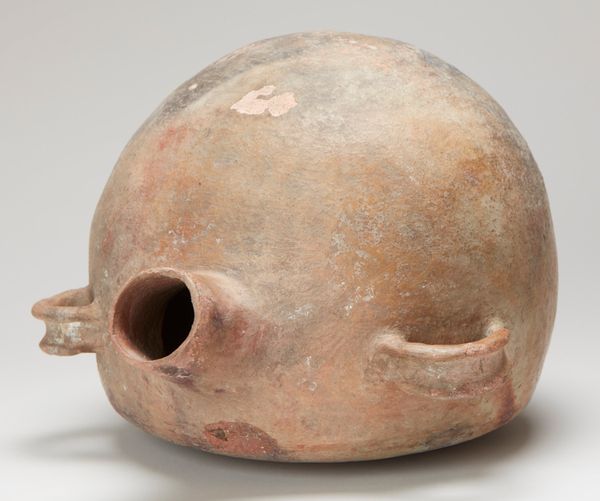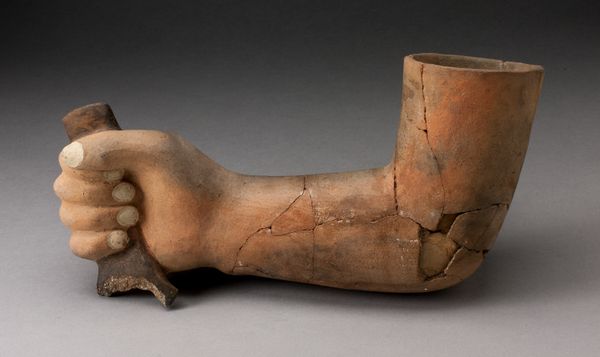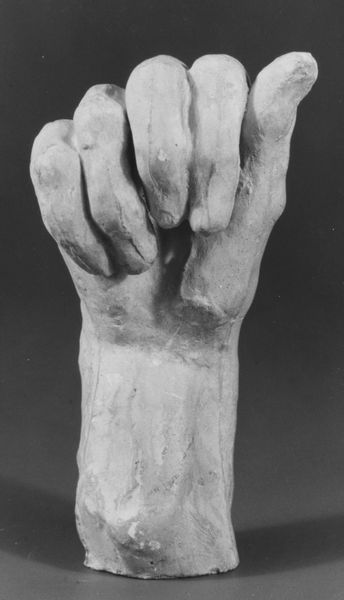
bronze, sculpture
#
portrait
#
impressionism
#
sculpture
#
bronze
#
sculptural image
#
sculpting
#
sculpture
#
italian-renaissance
#
statue
Copyright: Public domain
Curator: Allow me to introduce Medardo Rosso's evocative sculpture, "Sick Boy," crafted in bronze around 1889. Editor: The immediate impact is a sense of profound fragility. The bowed head and blurred contours almost melt into the base, hinting at vulnerability and perhaps even suffering. Curator: Indeed. Rosso’s technique here is key; the unfinished, almost amorphous quality of the bronze seems to defy traditional sculpting practices, it shows the rawness of process. Look closely, and you’ll notice how the materiality is not concealed but revealed; the surface isn’t polished to a high sheen but textured. Editor: I'm struck by how the symbol of illness is rendered. Rather than a literal depiction, Rosso captures the inner state of the child through the very form of the sculpture. The tilted head suggests submission or introspection, while the lack of sharp details invites us to project our own experiences of fragility. Curator: That links to what was a modern approach. We have a move away from representing the perfect body that was an ideal, towards an experience of the body in sickness, this represents how materialist practices started to examine all strata of society. Editor: I wonder about the broader implications of this image. Is it simply a portrait of a sick child, or does it serve as a commentary on mortality and the transient nature of existence? Children and illness have been potent symbols for a while but there is an emotional intensity, it captures the anxieties of an era grappling with widespread disease. Curator: Ultimately, it challenges the divide between art and life, doesn't it? Rosso presents us with a palpable representation of the human condition, highlighting the fact that labor is what turns metal into evocative sculptures. Editor: An excellent point, it shows we need to question the status of the piece as solely a ‘high’ art object when looking at its material form. Curator: Reflecting on “Sick Boy,” it reminds us that art can reside in process. Editor: And that visual symbols continue to resonate across time, sparking conversations about our shared humanity.
Comments
No comments
Be the first to comment and join the conversation on the ultimate creative platform.
